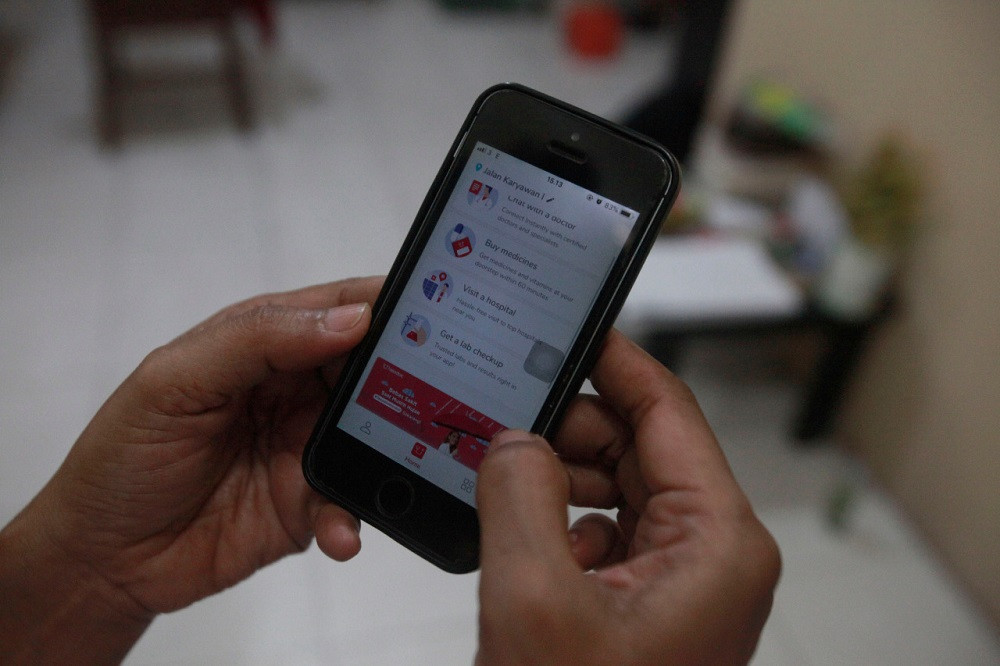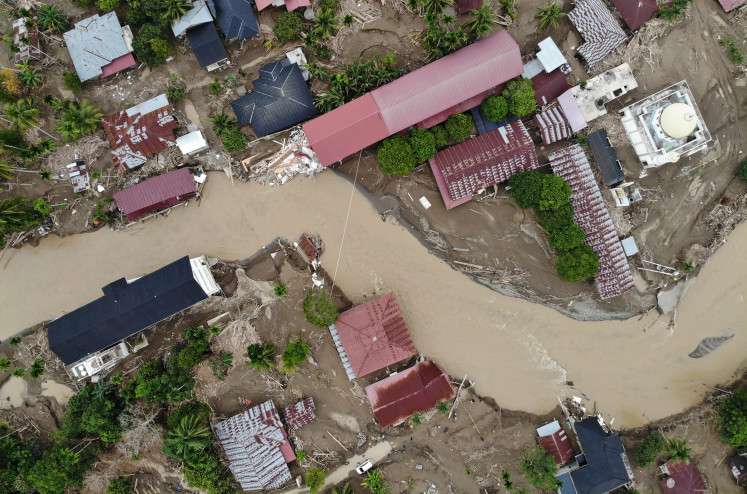Popular Reads
Top Results
Can't find what you're looking for?
View all search resultsPopular Reads
Top Results
Can't find what you're looking for?
View all search resultsDigitizing health care is the new normal
In Indonesia, more than 2 million people reportedly have already used telemedicine services and the figure is growing.
Change text size
Gift Premium Articles
to Anyone
W
e have been fighting the COVID-19 pandemic for almost seven months since the first positive case was announced on March 2. In strategizing healthcare during the pandemic, an initiative of enabling patients to virtually visit their physicians, instead of face-to-face, has been endorsed to push down the virus transmission.
Such practice is essentially called telemedicine, which ranges from e-medical diagnosis to eprescriptions.
Many providers of telemedicine continually try to enhance their services in response to the “new normal”, and closely collaborate with the relevant authorities and stakeholders while engaging in co-regulation to make the most of telemedicine and ehealth, which are thriving during this pandemic.
The Indonesia Healthtech Association (Healthtech.id), for instance, has routinely organized webinars to discuss and offer key recommendations, collaborative programs and advocacy in flattening the COVID-19 curve as quickly as possible by empowering data-driven strategies.
They bring to the table all contesting issues with regard to telemedicine, such as health information exchanges, electronic prescribing rules and rates, electronic medication management, legal liability and data processing compliance, reimbursements for services, limitation of medical practice license, and how to nudge people and policymakers to adapt to changes to healthcare access through technology.
Fortunately, the Health Ministry decided on April 29 to temporary waive rules on telemedicine, based on Circular Letter No. 303/2020 and Indonesia Medical Council Regulation No. 74/2020. Previously, telemedicine was mostly the domain of healthcare facilities (e.g. hospitals) and not directly relevant in interactions between physicians and patients (see Ministerial Regulation No. 20/2019 on telemedicine).
For now, and during this pandemic, direct e-consultation, emedication and e-prescription between doctor and patient are to be experienced with some guidance and limitations.
In Indonesia, more than 2 million people reportedly have already used telemedicine services and the figure is growing. We believe the demand of telemedicine is here to stay, coexisting with the ordinary healthcare system, not a substitute for in-person care.
To not waste any effort and invested money in telemedicine, we need to continue to shape our desirable telemedicine services beyond the public health emergency. In embracing the new normal in healthcare with telemedicine, we need to carefully consider several issues before expanding it across the nation.
Among the key issues is accountability for data privacy and security requirements (including how the patient data is processed and safeguarded), accelerating health information exchange, establishing alternative medical license permits for such virtual services, integrating insurance reimbursement and mapping out liability among actors of telemedicine.
We need also to ponder whether e-malpractice can be properly mitigated, how data loss prevention mechanisms are implemented and how a sandbox and registration is facilitated. For example, relevant or trusted authorities/ parties can perform an algorithm audit of telemedicine apps to ensure there is fair and unbiased processing along with due diligence to the providers. Most importantly, as telemedicine strongly relies on the internet, there should be incentives, training and an effort to close infrastructure gaps to enable rural areas and low-literate internet users to adapt with telemedicine.
Another issue is related to the demarcation between “well-being” apps and medical devices. Those apps may have a “pseudomedical purpose”. Medical device laws dictate that there should be safety requirements and mandatory monitoring procedures during such treatment.
Today, most promoted advancements of healthtech development lie within the democratization of mobile health apps and platforms (e.g. medication and well-being apps) where individuals can download the apps from an online app store. Consequently, a plethora of those apps are increasingly marketed which has led to an “appification” boom.
To recognize whether an app falls under the strict rules of medical devices or not, there are at least two approaches. First, requiring the manufacturers to declare in advance whether their apps are intended for treating, monitoring or preventing disease. If they are not, they should not be regulated as medical devices. Second,
use a “risk-based” approach that requires the apps to adhere to medical device regulation in case the usage is likely to present a risk over a certain threshold.
Furthermore, with regard to the health data, a stricter data processing regime must be in place because this type of data is very sensitive or poses high risks in nature. Many health-related technologies have made use of that kind of data as part of innovation. The deployment of innovative technologies should, then, assess from the outset risk management over the right and freedom of the (prospective) patients to uphold the principle of patient empowerment. The deployment of interoperable systems should also be enhanced through active engagement with stakeholders who have applicable business and end-user, technical and legal perspectives.
Nevertheless, the presented analysis should not be seen as a barrier to the deployment of innovative automation, data analytics and autonomous technologies (e.g. artificial intelligence-based products) in health care, but as a main enabler of excellence and trust in embracing the new normal.
***
Daniar Supriyadi is the technology lawyer at Bahar law firm and Gregorius Bimantoro, a medical doctor, is chairman of Indonesia Healthtech Association. The views expressed are their own.










